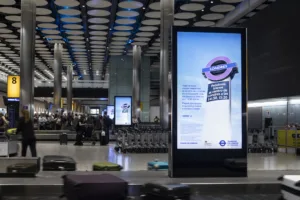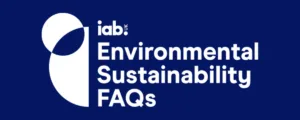By Suzana Lay, Head of Brand Team & Planning Director, The Grove Media
If you take everything at face value coming out of the US, 2023 is going to be the year big brands get into podcasting. Adspend is buoyant, audiences are increasing and, according to Nielsen, podcasting is now a highly effective medium that boosts brand metrics.
And the stats for podcasting look great. According to a 2022 report from Insider Intelligence, podcasting will be a $94.88 billion industry by 2028, with 424.2 million podcast listeners worldwide in 2022, accounting for 20.3% of internet users. And PWC UK says that podcasting advertising revenue is set to grow from £37m to £64m by 2025.
With all this growth and optimism, questions are being asked about why so few podcast ads are bought programmatically through demand-side platforms. Surely programmatic is the answer to the scale, ease and cost-effectiveness that advertisers are looking for?
While podcasting is clearly a growth area of digital – being embraced by bigger brands with bigger audiences – I believe that pushing for large-scale programmatic misunderstands the benefits and importance of the medium. A lot of programmatic is done for agency benefit, but podcasts are not a natural programmatic medium.
The Interactive Advertising Bureau estimates that programmatic currently accounts for about 2% of podcast trades in the US at the moment, and it’s likely to be less than that in the UK. More inventory is gradually being made available for programmatic, but frankly to get the real engagement and attention benefits of podcast you need a level of human decision-making about the host, other participants and content. And host-read ads, bought directly with the platform or network, are still seen as the gold standard because of the higher audience engagement. And, aside from the loss of vetting of host and content, programmatic trading also removes other controls, such as knowing which spots run in which shows, managing CPMs within budget setting, and good access to post-run reporting.
All of this is not to say that automation doesn’t have a place in podcasting, it absolutely does. The growth of automated solutions such as dynamic ad insertion are hugely important. Dynamic ad insertion allows for more flexibility and scale in campaign messaging, together with more precision in of audience targeting. Individually adapted ads are placed into a podcast in real-time, and they are geo-targeted and local to the listener’s market, so two listeners may hear different ads, even if they’re listening to the same episode.
The success of podcast advertising is all about the targeting – matching the right content with the right audience. And this is why contextual targeting is so important with podcasts. Digital media was built on widely available signals such as cookies and mobile ad identifiers, but these are not available in podcast. And faced with such an enormous depth of content in podcasting, context becomes all important. Conversational targeting tools now combine advanced speech-to-text transcription technology with AI and natural language processing to enable and refine contextual targeting.
And with the right contextual targeting you are not just matching the right content with the audience, you are also getting an audience that is positively inclined to advertising. In its Media Reactions 2021 report, Kantar highlighted podcasting as the number one online channel for advertising equity, ie “places where users of media channels and media brands most appreciate advertising and are least likely to view ads negatively”.
For advertisers, these are dream audiences – highly engaged and open to advertising. But it’s not a volume game. The Diary of a CEO with Steven Bartlett, The Rest is Politics and My Dad Wrote a Porno are all hugely popular podcast, but the number are small compares to other media – My Dad Wrote a Porno averages around 170,000 impressions per week (Acast). The attraction for brands is not highly efficient, volume – other media can offer better CPMs – it’s the attention and advertising effectiveness.
Research conducted by The Guardian and Tapestry found that 65% of listeners paid attention to podcast adverts, more than adverts on TV at 39% and adverts on the radio at 38%. And Nielsen’s recent Podcast Ad Effectiveness study found that podcast ads drive an aided brand recall rate of 71%, while 56% of podcast listeners say they pay more attention to ads read by the host(s). It really is the beauty of listening solus, with no other media consumed at the same time and by appointment.
Rather than pushing for programmatic in podcast advertising, arguably the focus for the industry should be on improving measurement. At the recent Future of Audio Europe 2023 conference, ‘improving how we measure audiences’ was chosen by 83% of the audience as by far the most important issue for the industry, followed by “changing the way audio is traded” (10%), increasing “brand safety on digital audio” (3%).
A lot of the measurement technologies that exist today are fragmented and were not designed for podcast advertising. Arguably, we’re trying to make them do something they weren’t built to do. Podcast measurement is focused on impacts, but it’s sold as high engagement and action medium. The challenge is how to link engagement and action when podcasting is bottom-of-the-funnel and you can’t follow the journey from listening to action. It is possible to tag podcasts using cookies and provide more seamless attribution. However, there is no way at present for listeners to consent to audio cookies, which would require brands to change their cookie policies, acknowledging data being passed back to them. Hard to see how this conundrum is resolved.
Podcasting is rightly getting more interest from both consumers and advertisers. Brands have the ability to engage advertising-receptive listeners at a time of their choosing and when their attention levels are notably high, But if you’re looking for automated, highly efficient, mass reach, there are other, far better digital platforms out there









